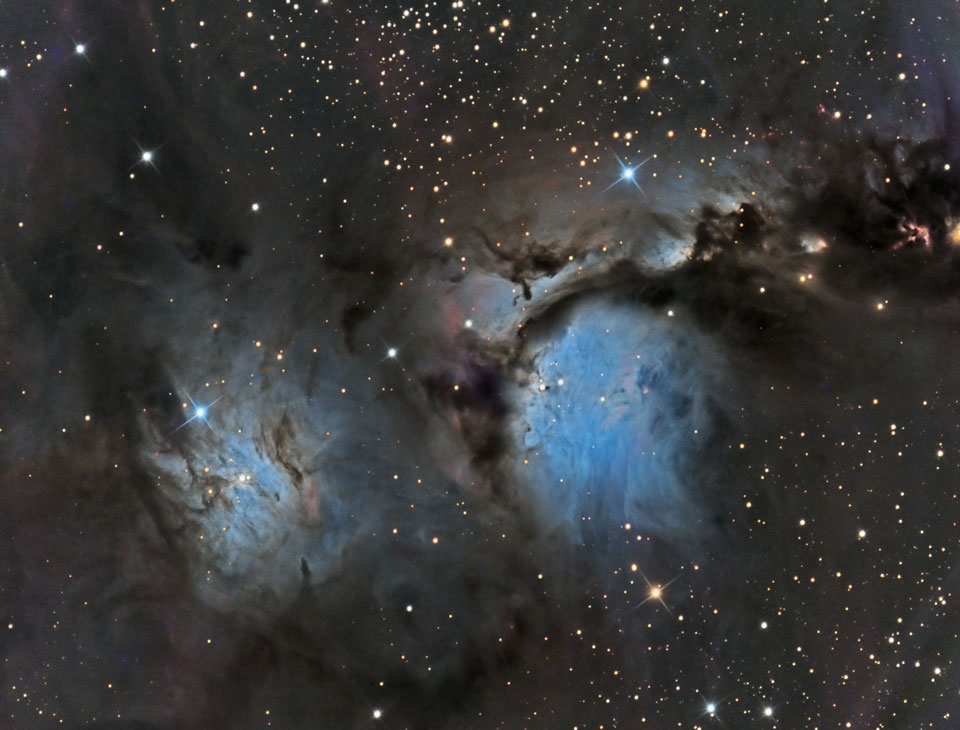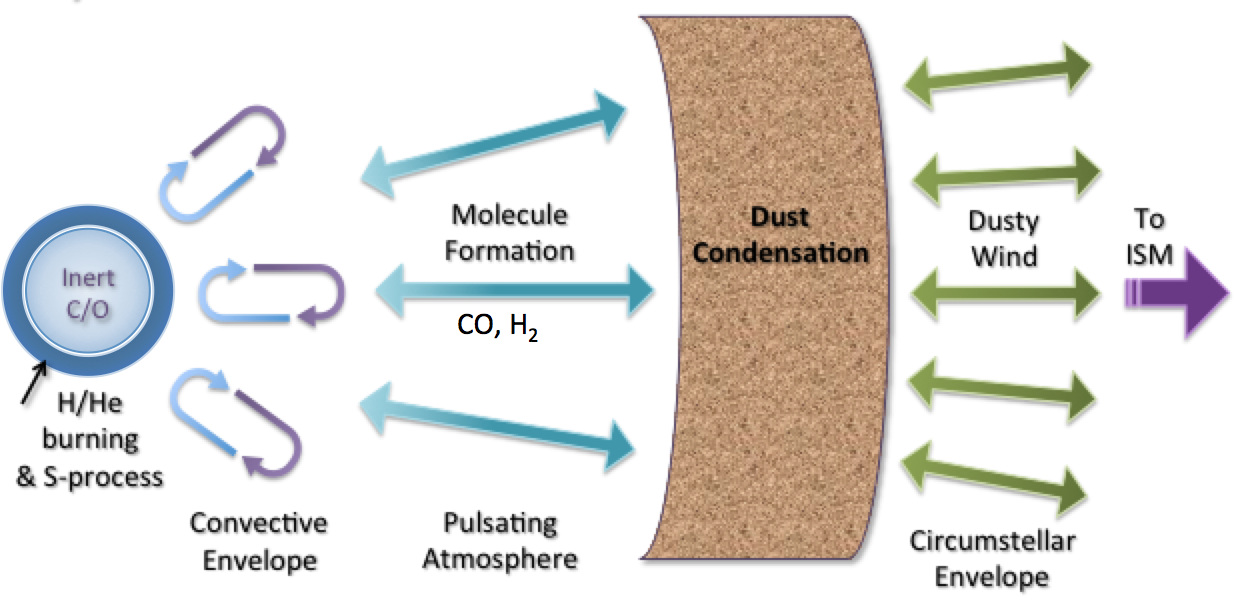Science Overview
Interstellar Dust Origins
Interstellar dust acts as a shield, protecting cosmic objects from harsh radiation. Dust shielding allows molecular clouds to cool, which leads to the formation of new stars and planets. Its role in star formation makes interstellar dust an essential driver of galaxy evolution.
To form, dust requires metals (carbon, silicon, iron, magnesium, aluminum, etc.), and these metals were scarce in the early Universe. It's not clear whether early, metal-poor stars are able to produce much dust. Nonetheless, there is evidence for dust in high redshift quasars when the Universe was less than 1 billion years old (e.g., see here, here, and here). How did this dust get there?
Asymptotic Giant Branch Stars AGB Stars
Most stars from about 1-10x the mass of our Sun go through the AGB phase after they use up all their core hydrogen. The AGB phase is brief compared to the lifetime of the star, but the consequences are dramatic. AGB stars are bloated red giant stars, and since they are so large, their outer atmospheres are cool. The low temperatures allow for dust condensation and radiation pressure pushes the dust outwards, creating a dense stellar wind. Because almost every star goes through this phase, AGB stars may be a dominant source of interstellar dust.
AGB stars are unique in that they are able to form dust from new metals they formed themselves around their cores. This might make them efficient dust producers even in the early Universe. The DUSTiNGS survey aims to detect dust around metal-poor AGB stars to test whether metal-poor stars are able to produce dust early on.
Primary Research Projects
My focus is on nearby galaxies, including the Magellanic Clouds (LMC/SMC), M31, M33, and dwarf galaxies in the Local Group and Local Volume
LUVIT
The Local UltraViolet and Infrared Treasury includes Hubble UV, optical, and infrared and imaging of more than 20 Local Volume dwarf galaxies within 3.5 Mpc.
DUSTiNGS
The DUST in Nearby Galaxies with Spitzer program imagined 50 nearby dwarf galaxies within 1.5 Mpc at 3.6 and 4.5 microns.
PHAT (M31/M33)
The Panchromatic Hubble Andromeda and Triangulum Treasury programs imaged a third of M31 and all of M33 with Hubble with UV, optical, and infrared filters. Follow up Hubble programs targeted small fields with narrow and medium filters.
SAGE (LMC/SMC)
The Surveying the Agents of Galaxy Evolution program targeted the Large and Small Magellanic Clouds with Spitzer. The survey includes imaging from 3.6 to 160 microns and infrared spectroscopy of a large sample of dusty objects within each galaxy.

